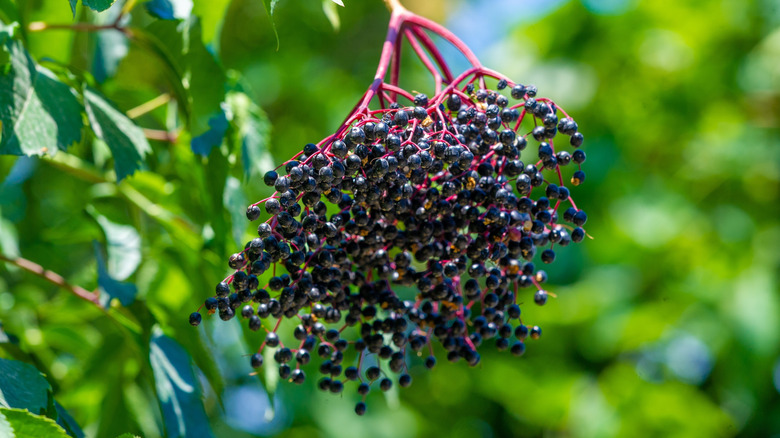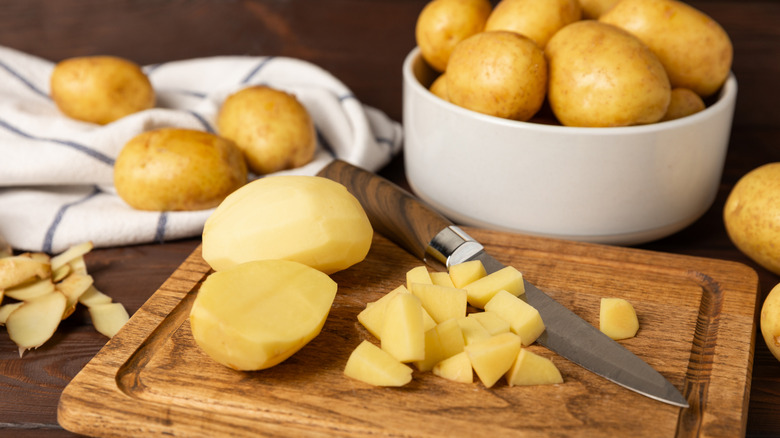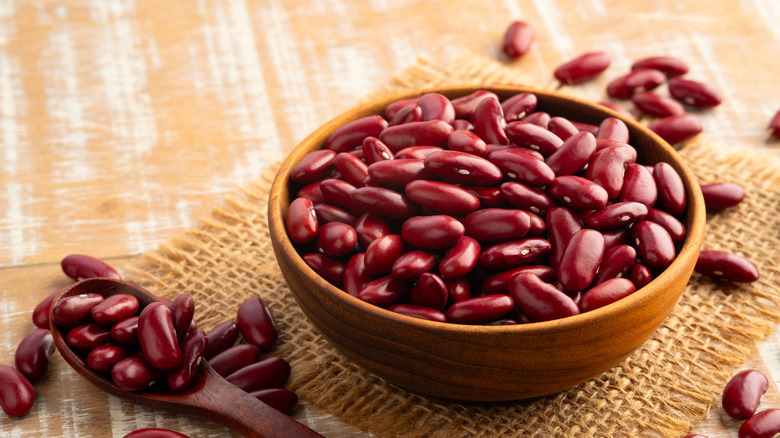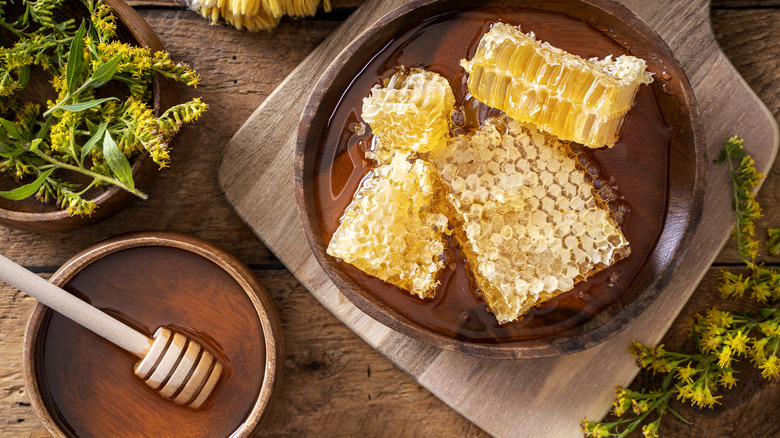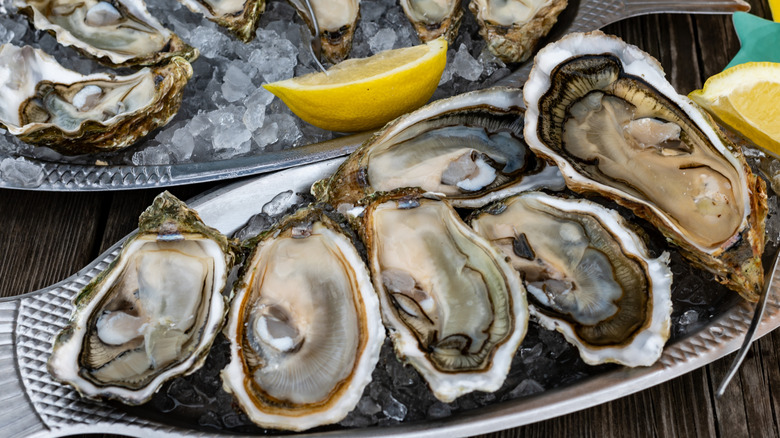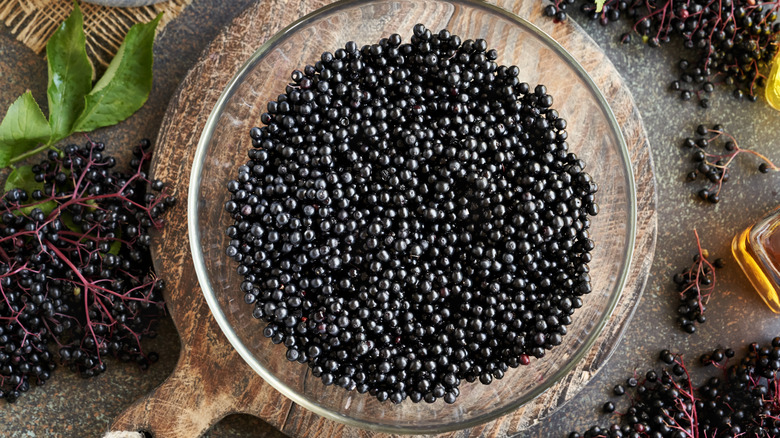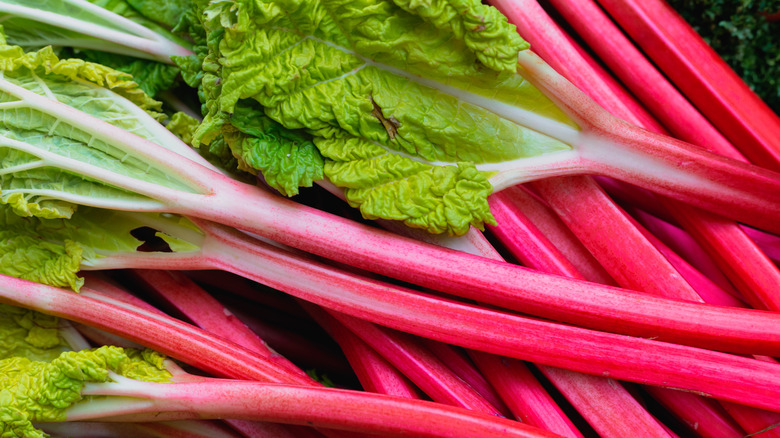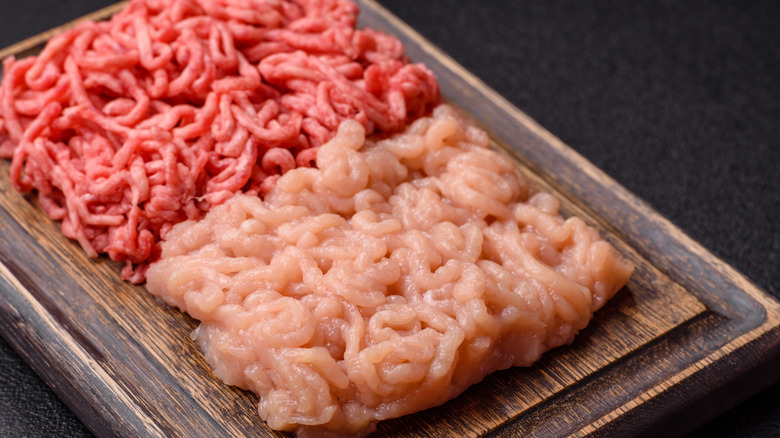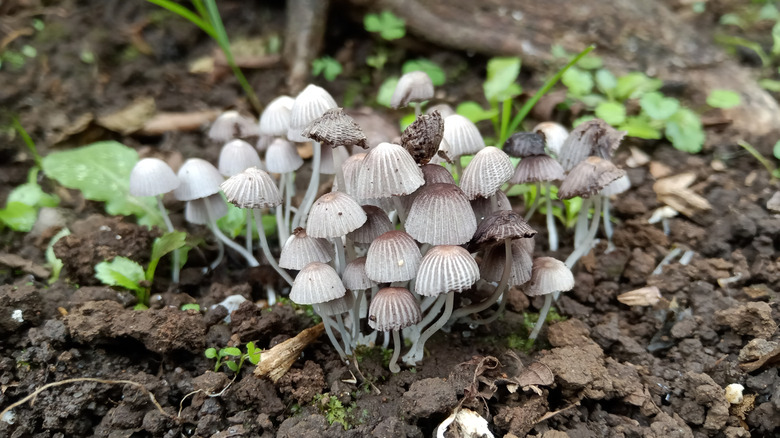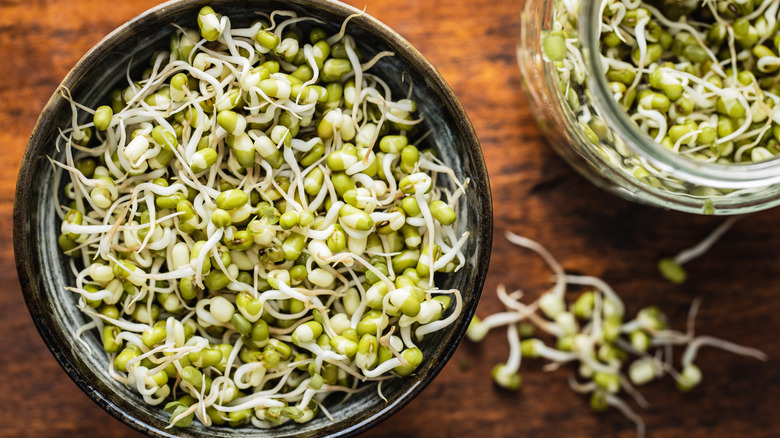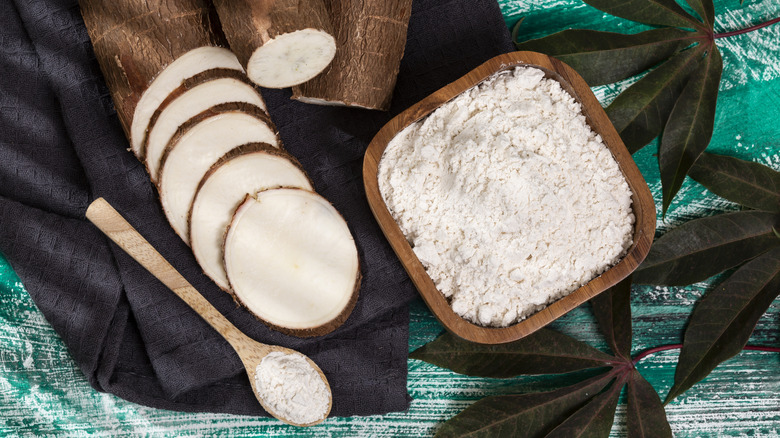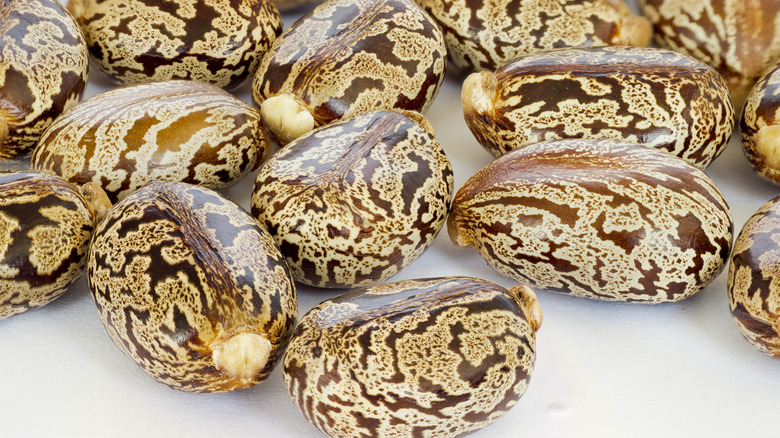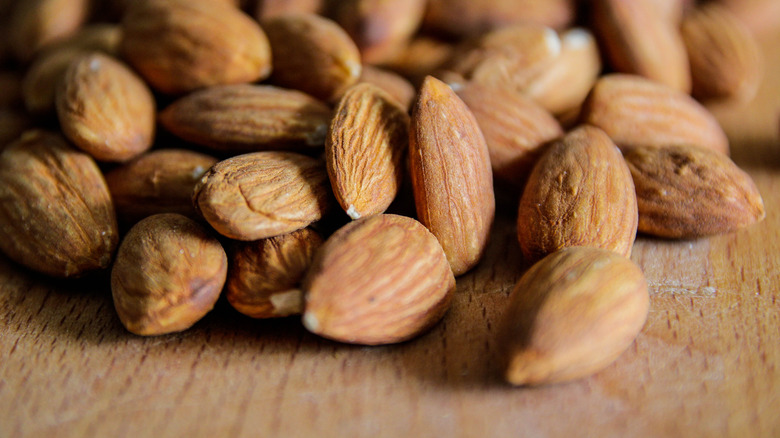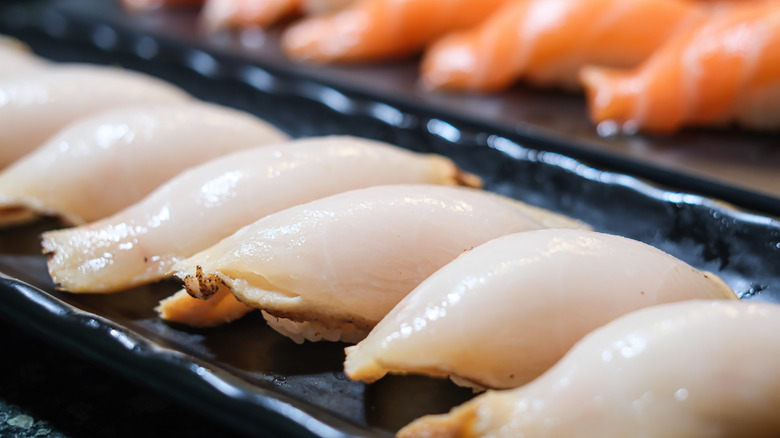16 Foods You Should Never Eat Raw
Raw foods are often hyped as the healthier choice. After all, these foods are straight from the earth, so must be packed with health benefits, right? Well, not always. While some raw foods are nutritional powerhouses, others can do more harm than good, and certain raw foods you should avoid entirely.
Some raw foods contain harmful compounds that the body can't digest – naturally existing chemicals like oxalates, cyanide, or psilocybin. These may be fine in small amounts, but can wreak havoc on our bodies when consumed in excess. Other raw foods have a high risk of pathogens, potentially leading to food poisoning or even death.
Which raw foods should you avoid? We asked two nutrition experts for answers. Beth Conlon, PhD, Owner and Registered Dietitian of From the Start Nutrition, LLC, provides nutritional therapy and educational services to all ages. Dr. Jennie Ding is a Lifestyle Medicine Physician at Kale Health Canada, specializing in personalized gut and metabolic health support. Together, they've identified foods that should never be eaten raw, detailing the fascinating — and often disturbing — reasons why.
Potatoes
If you've ever bitten into raw potatoes, it's not a pleasant experience. The texture is dense and chalky, while the flavor leaves much to be desired. This is no accident on Mother Nature's part, since raw potatoes are dangerous to eat. "Raw potatoes contain glycoalkaloids (solanine and chaconine) and lectins, which can cause digestive upset, headaches, and in large amounts, even toxicity symptoms like hallucinations and paralysis," explained Dr. Jennie Ding.
These harmful toxins aren't the only concern with raw spuds. "They're also difficult to digest due to resistant starches," said Ding. "Cooking breaks down these compounds and makes potatoes safe and palatable." However, cooking isn't the only precautionary measure to consider.
Beth Conlon encourages cooks to always "wash potatoes to remove dirt and potential bacteria before eating." This is good advice even if you plan to peel the potatoes before cooking. Washing helps remove potential contaminants, while simply peeling can transfer existing bacteria from the peel to the flesh.
Eggs
Just because Rocky — and countless fitness enthusiasts since — chugged raw eggs, doesn't mean you should. While raw eggs are believed to contain more nutrients, they also carry significant risks. "Raw or undercooked eggs may contain Salmonella Enteritidis, a bacterium that can cause foodborne illness," Beth Conlon explained. Dr. Jennie Ding added another concern: "Raw egg whites contain avidin, which can bind biotin (a B vitamin) and potentially cause deficiency if consumed in large quantities over time."
Even if you're not drinking raw eggs on purpose, this food can sneak into your diet unintentionally, especially through homemade condiments and baked goods. "This risk applies to dishes like homemade mayonnaise, eggnog, or raw dough containing eggs," Conlon noted. We've all been tempted to lick that cookie dough bowl clean — and most of us have done it without consequences. However, making this a regular habit, especially in larger quantities, isn't worth the risk. The FDA advises that eggs are cooked thoroughly, until the white and yolk become firm.
Kidney beans
If you're experimenting with raw diets, steer clear of kidney beans — they're only safe when heated to appropriate temperatures. While raw beans aren't appetizing anyway, the health risks go far beyond a bad taste and texture. "Raw or inadequately cooked red kidney beans contain high levels of phytohaemagglutinin, a toxic lectin that can cause severe nausea, vomiting, diarrhea, and abdominal pain within one to three hours of consumption," said Beth Conlon.
We're not just talking about a giant bowl of raw kidney beans, either. "Just four or five raw beans can trigger toxicity," Conlon warned. As such, she recommends "soaking beans overnight and boiling at 212 degrees Fahrenheit for at least 10 minutes to destroy most of the toxin." Avoid using a slow cooker to cook kidney beans – it won't reach a high enough temperature to eliminate the risk.
The good news? "Canned kidney beans are pre-cooked and generally safe," said Conlon. Since kidney beans are one of the canned beans you should always have in your pantry, it makes the whole process even more convenient. Just crack open a can and you're ready to go.
Honey (for certain demographics)
If you're crinkling your eyebrow in confusion, we get it. Most people don't think that hard about the production process behind honey, assuming the sweet liquid gold is always served raw. However, there are two types of honey: raw and pasteurized. Raw honey is straight from the source and maintains a higher level of antioxidants, while pasteurized honey undergoes a heating and cooling process that destroys some potentially harmful bacteria.
"The main concern with raw honey is botulism, a potentially fatal food poisoning resulting from ingesting even a minuscule amount of toxin produced by the anaerobic, spore-forming bacteria Clostridium botulinum," explained Beth Conlon. This bacteria is from the same family as Botox, and like Botox, can weaken or paralyze muscles — however, not ones you'd expect. When consumed, this bacterium can spread to muscles essential for breathing, proving fatal in 5% to 10% of cases.
However, the risk isn't universal. "Infants under the age of one, the elderly, and immunocompromised individuals are at greatest risk of Botulism if exposed," said Conlon. "Most healthy adults can tolerate some exposure to Botulism, which is why it's less of a problem."
Shellfish
Raw oysters are considered a delicacy. Fans love squeezing lemon into the shell, gently loosening the meat, and slipping that sour, briny combo into their mouths. But given the serious health risks, should we be eating raw oysters?
If you've ever gotten sick from oysters, it's enough to put you off shellfish for life. Unfortunately, oysters carry a high risk of dangerous pathogens, making this scenario too common. "Raw oysters are notorious for having bacteria such as Vibrio vulnificus and viruses like norovirus, both of which can cause severe illness or even death, especially in people with weakened immune systems," explained Dr. Jennie Ding. Beth Conlon said that warmer temperatures increase the risks: "Rising sea temperatures have actually increased the prevalence of Vibrio bacteria, making raw oysters especially hazardous during the summer months," she said.
The risks extend beyond oysters. "Raw shellfish, including mussels, clams, oysters, and shrimp, carry a higher risk of Hepatitis A contamination, which can lead to serious health issues, " said Conlon. Fortunately, our experts say proper cooking dramatically reduces these dangers. So oyster lovers can still enjoy their favorite shellfish by grilling oysters for a little at-home decadence.
Milk
Most milk sold in the United States is pasteurized, being heated to a specific temperature to kill harmful bacteria. While certain circles rave about raw milk's health benefits, the FDA doesn't feel these claims are supported by scientific evidence. Unfortunately, where demand exists, supply follows, and an unregulated black market for raw milk raises even greater concerns about contamination.
So what's potentially lurking in that liquid? "Raw (unpasteurized) milk can carry dangerous bacteria such as E. coli, Salmonella, and Listeria, which can cause serious illness, particularly in children, pregnant women, the elderly, and immunocompromised individuals," shared Dr. Jennie Ding. And the risks extend beyond these common pathogens. According to Beth Conlon, "raw milk can transmit highly pathogenic avian influenza (HPAI H5N1) if it comes from infected cows."
This contamination threat isn't limited to milk, either. "This risk also extends to fresh, soft cheeses made from raw milk," advised Conlon. For those prioritizing safety, pasteurized milk and dairy products are the best options.
Elderberries
Many of us have heard stories of wilderness wanderers consuming raw berries, only to become seriously unwell hours later. But is there any truth to these claims? It seems highly possible, especially if elderberries are involved. "Uncooked elderberries, as well as the leaves, bark, and roots, contain lectins and cyanogenic glycosides, which can release cyanide and cause nausea, vomiting, and diarrhea," Dr. Ding shared. This is precisely why fresh elderberries are one of the fruits you never find at grocery stores.
So if elderberries carry such a serious risk, why are elderberry-flavored syrups and sweets so popular? The answer lies in proper preparation. "Cooking eliminates these toxins, making elderberries safe to consume in jams, syrups, and baked goods," Ding explained. If you enjoy elderberry's distinctive tart, sweet, and slightly earthy flavor, stick to commercially prepared elderberry drinks, jams, and sweets. These processed versions deliver the taste without the potentially fatal consequences.
Rhubarb leaves
You've been told to eat loads of green leafy veggies — and a wide variety. But that doesn't mean you shouldn't be discerning, especially since some can cause more harm than good. Rhubarb leaves are poisonous, and a prime example of nature's deceptive danger.
"The stalks are safe to eat," Dr. Ding confirmed — but not the leaves. "Rhubarb leaves are highly toxic due to their high oxalate content, which can bind minerals in the body and form crystals that may lead to kidney stones," she said. Even if you're not eating a giant rhubarb salad, the toxicity of this leafy plant is genuinely frightening. "Ingesting even moderate amounts can cause symptoms ranging from stomach pain and vomiting to seizures, and in rare cases, death."
Luckily, tasty strawberry rhubarb pies remain safe since they're made with the stalks. And those vibrant pink stems can be used in everything from sweet sauces and cakes to savory salads and stews. Just remember, when preparing raw rhubarb, stick to the stalks, and discard those dangerous leaves.
Poultry, pork, and ground beef
It's common knowledge that raw poultry, pork, and ground beef should be avoided since these animal proteins carry a high risk of pathogens. Cooking thoroughly lowers or eliminates these risks, which exist in the muscle as well — not just the surface of the food. If you do consume contaminated meat, you may get a bout of food poisoning. But if the toxin spreads to your bloodstream, it can travel to other body systems, causing more harm.
Eating raw pork risks trichinosis, a food-born disease caused by the parasitic roundworm Trichinella. When consuming infested raw pork, its larvae are broken down by stomach acid, freeing the adult worms. Trichinosis can cause anything from mild gastrointestinal symptoms to encephalitis in extreme cases.
Meanwhile, Clostridium perfringens, Salmonella, E. coli, and other dangerous bacteria are often found in raw chicken or ground beef. Fortunately, these are killed through thorough cooking, so make sure you prep and cook meat properly. And before cooking, don't rinse ground beef, poultry, or pork since the splashing can spread bacteria throughout your kitchen.
Flour or dough
Is that leftover brownie batter calling your name? Do yourself a favor and silence the sound. It might taste yummy for a hot second, but you might not feel so hot hours or days after. "Eating raw dough or batter (e.g. cookie dough) poses a risk of food poisoning," explained Beth Conlon. "Germs can contaminate grain in the field or during milling." To make matters worse: "Raw eggs in dough add an additional Salmonella risk."
When making homemade breads, cakes, and pastries, take care to keep things safe. "Cooking or baking to appropriate temperatures is the only way to ensure safety," said Conlon. She discourages anyone from taste-testing raw dough, which may be tempting in sugary products like cakes. She even recommends that you "keep raw flour separate from ready-to-eat foods to prevent cross-contamination." So if you're done cooking but have leftover flour or batter, wrap it in a bag and toss it in the trash.
Wild mushrooms
Eating the wrong mushroom in the wild might send you on a trip — but not the kind you'd think. More like a journey to the emergency room. Identifying mushrooms in the wild is far harder than people imagine, and one wrong guess can have dangerous consequences.
"Some wild mushrooms are deadly poisonous and can be easily mistaken for edible types, making raw consumption extremely risky," Dr. Jennie Ding explained. Even more alarming, Beth Conlon said that "only about 1% of edible wild mushrooms are considered safe to eat raw," adding: "It's very important to ensure proper identification, as some toxins (like amatoxins) are heat-stable and remain deadly even when cooked!"
Common grocery store mushrooms like button or oyster are considered safe to consume raw, although you shouldn't eat raw shiitake mushrooms as they can give you a rash. But just because it won't kill you doesn't make it ideal. "Even edible varieties can be tough to digest raw and may cause gastrointestinal discomfort," said Ding. This is partially because mushrooms have a thick cell wall made of chitin, a sugar that can stress digestive tracts. Luckily, cooking breaks down these tough sugars and fibers, while transforming bland mushrooms into deliciously flavored fungi.
Sprouts
There are many health benefits associated with sprouts, including lowering blood sugar and improving digestion. However, sprouts are also linked to foodborne illnesses – and according to our experts, this is no surprise. "Outbreaks have been repeatedly linked to sprouts for decades," Beth Conlon shared. "Raw or undercooked sprouts (e.g., alfalfa, mung bean, radish) can be contaminated with E. coli, Salmonella, or Listeria due to the warm, humid conditions required for germination, which favor bacterial growth."
Conlon warned that "washing does not guarantee safety" when it comes to sprouts. She recommends that high-risk groups such as children, the elderly, immunocompromised, and pregnant individuals, "avoid raw sprouts, or ensure they are thoroughly cooked."
Luckily, many varieties of sprouts make excellent additions to cooked meals like Asian stir-fries. The beauty of stir-fries is that you can mix and match veggies, sprouts, and proteins: Pick your favorite ingredients, add complementary spices and sauces, and cook everything well to eliminate any harmful pathogens.
Cassava
Cassava isn't super-common in the United States, but you've likely encountered it. Those chewy pearls in your boba tea or that satisfying texture in tapioca pudding? They're both made from cassava root flour. In some countries, however, cassava root (or yuca) is a starchy staple that's consumed much like potatoes. And like potatoes, cassava root should never be eaten raw.
"Raw cassava contains cyanogenic glycosides, which release cyanide when eaten raw," warns Beth Conlon. Before you panic, understand that cyanide is not uncommon in raw produce. It's an antinutrient — nature's way of preventing overconsumption by pests. Think of it as the plant's built-in survival mechanism: Animals can nibble a bit, but too much sends them running, protecting the plant in the process.
Fortunately, there's a simple solution. "Proper processing (peeling, soaking, cooking) is essential to reducing this toxin exposure," Conlon told us. Unfortunately, not everyone has access to proper cooking or processing methods. Washington University reports that poor communities of Africa consuming large amounts of cassava root (often improperly processed) suffer from konzo, a chronic form of cyanide poisoning.
Castor beans
Castor beans sound harmless, yet you've probably never seen them — and for good reason. "Castor beans contain ricin, one of the most potent natural toxins known to mankind," said Dr. Jennie Ding. "Even a small amount can be deadly if chewed and swallowed." As few as three seeds can kill an adult, and a single bean could be lethal to a child. As the CDC explains, the poison gets into the cells and prevents protein from forming, forcing the cells to die.
Symptoms of ricin poisoning depend on the quantity consumed, but can begin roughly 10 hours from consumption and include difficulty breathing, fever, seizures, and organ failure. With a substantial enough dose, death can occur anywhere from 36 to 72 hours after consumption.
"Castor beans should never be consumed raw — or at all unless highly processed and detoxified industrially," Ding emphasized. For your safety, you won't find castor beans on store shelves. However, you've probably seen or heard of castor oil, which is derived from the bean. Don't worry — an intense heating and manufacturing process destroys the ricin, making this oil safe for its many medicinal and beauty applications.
Bitter almonds
In murder mystery novels, detectives often crack the case by identifying the telltale bitter almond scent — supposedly a giveaway of cyanide poisoning. Although cyanide is said to give off that bitter almond aroma, it might be the other way around. "Bitter almonds contain amygdalin, which converts to cyanide in the body," Dr. Jennie Ding revealed. Either way, it's definitely not something you'd intentionally consume, unless you want to be the victim in your own murder mystery.
The lethal dose is shockingly small. "Eating even a small number of raw bitter almonds can cause cyanide poisoning," Dr. Ding explains. To be more specific, Washington University reports that roughly 20 bitter almonds are lethal to an adult, who would notice their nervous system slowing down along with severe breathing issues. Luckily, you won't stumble upon bitter almonds Stateside. "Only sweet almonds (which are safe) are sold for direct consumption in the U.S," said Ding.
Escolar
Escolar is a type of fish you might encounter at sushi restaurants. If you do, consider it a giant sushi restaurant red flag. "Escolar contains high levels of indigestible wax esters called gempylotoxin," explaiuned Beth Conlon. Despite its intimidating name, gempylotoxin isn't actually toxic, but it has a strong laxative effect and can cause oily diarrhea, nausea, vomiting, and headaches. The fish is banned in Italy and Japan, while Canada and some European countries require warning labels. The FDA actually banned escolar in 1990, but lifted the ban in 1992 after realizing it wasn't toxic — it just had extremely unpleasant side effects.
However, the problems don't stop there. Conlon added that "escolar may contain high levels of histidine, which can convert to histamine under improper storage conditions, potentially triggering scombroid poisoning, a severe allergic-like reaction." Making matters worse, this fish goes by a few names, including snake mackerel and oilfish. Escolar is "often mislabeled as 'white tuna' or 'super white tuna' in sushi restaurants, increasing the risk of unintentional consumption," she said.
